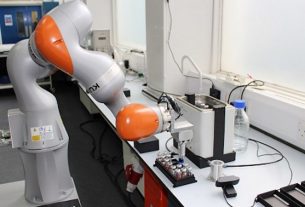In addition to its mission of collecting samples, the Perseverance rover is looking for landing sites likely to be used by the various devices deployed with the aim of bringing these samples of Martian rocks back to Earth. One of these leads is of particular interest to NASA.
Perseverance has been exploring the Jezero crater since it landed in February 2021. Its main objective is to collect several dozen rock samples and other sediments. These will then be picked up on the surface and brought back to Earth as part of another mission called Mars Sample Return (MSR). Analysis of these samples by state-of-the-art instrumentation could reveal signs of ancient life.
The Mars Sample Return mission plans to send two landers. The first will be responsible for delivering a rover whose objective will be to collect the samples left on the surface by Perseverance. The second lander will support the robotic arm in charge of recovering these samples to place them in a small rocket, whose objective will be to place them in orbit. This capsule will then be picked up by an ESA orbiter and brought back to Earth.
The first stage of MSR is already underway. Perseverance has indeed cored, collected and sealed nine Martian rock samples to date. Collected on July 6, the latest is the first collected from the ancient Jezero Crater River Delta.
The choice of landing sites
Remember that it is very difficult to land on Mars smoothly. Also, the choice of the landing site for these two machines will be essential. In a statement, NASA’s Jet Propulsion Laboratory (JPL) said the rover is currently searching for several sites that can provide ideal conditions for a landing. The ground should be as flat as possible. The absence of large stones (more than twenty centimeters) or sand dunes will also be appreciated.
“The flatter and more uninteresting the view, the more we are interested in it. We’ll have a lot to do when we get there to collect the samples, but tourism won’t be one of them,” said Richard Cook, MSR program manager at the Jet Propulsion Laboratory.
Future mission landings would require a patch of land with a radius of about sixty square meters. The team already has a location in mind. To get a closer picture of this site, researchers used Perseverance’s navigational cameras a few days ago to collect detailed images.
“We’ve been monitoring these places since before Perseverance landed, but images from orbit can’t tell us everything,” said Al Chen, Mars Sample Return Engineer at JPL. “Now we have some very close shots of this potential airstrip. And these images suggest we were right. This track will most likely be part of our shortlist of potential sites.”
For now, these two landers are still scheduled to be launched in 2028. If all goes as planned, the samples will be brought back to Earth in 2033.




